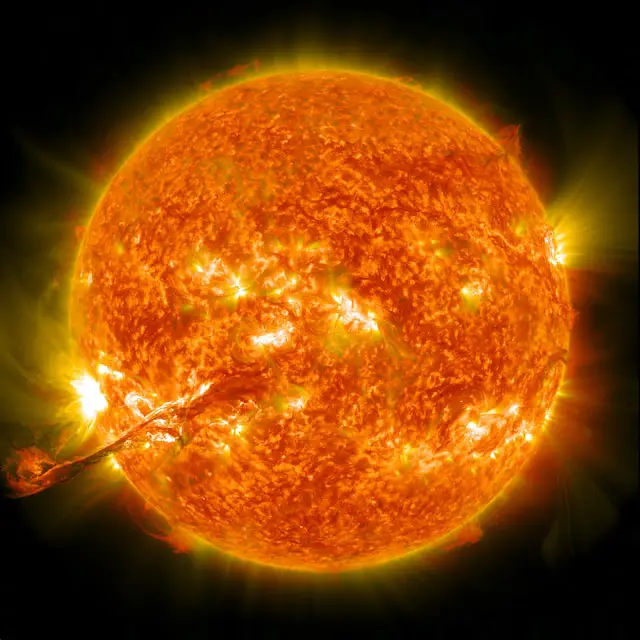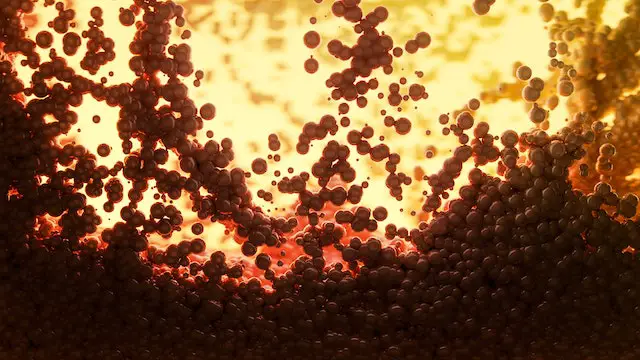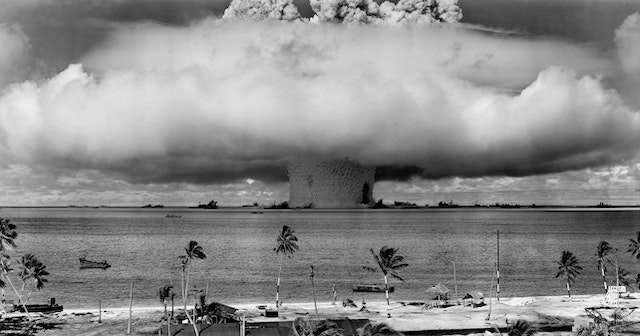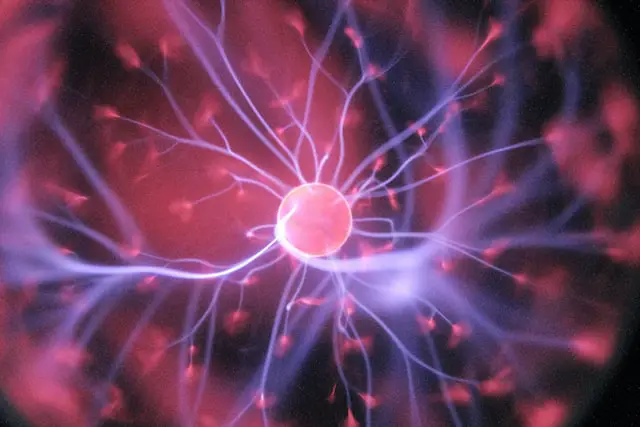Fusion involves combining lighter elements together in order to form heavier ones while fission requires splitting larger atoms into smaller ones. While both can be used as an energy source, they have their differences that must be taken into consideration when deciding which one to use for a particular application.
What is fusion?

In nuclear physics, fusion is the process by which two or more atomic nuclei join together to form one or more larger nuclei.
Fusion is a thermonuclear reaction in which two lighter atomic nuclei combine to form a heavier nucleus. The process releases energy and is responsible for the power of the sun and other stars.
The products of fusion reactions are generally heavier than the reactants. For example, when two hydrogen atoms fuse to form helium, the mass of the resulting helium atom is less than the sum of the masses of the two hydrogen atoms. The mass difference is released as energy according to Einstein’s famous equation, E=mc2.
Fusion reactions can only occur at extremely high temperatures—so high that conventional explosives cannot provide enough energy to start the reaction. In stars, including our sun, gravitational forces produce these high temperatures and pressures.
Here on Earth, we are working on ways to harness fusion power for peaceful purposes. Two approaches are currently being developed: magnetic confinement and inertial confinement.
What is fission?
(Photo by Marek Piwnicki at Pexles.com)

Fission is a nuclear reaction in which an atom splits into two or more smaller atoms. The fission of one uranium atom can release as much energy as the combustion of 16,000 tons of coal.
Fission reactions usually take place under high temperatures and pressures, such as those found in stars or nuclear reactors. When conditions are right, the nucleus of an atom can split into smaller nuclei. This process releases a large amount of energy, in the form of heat and light.
Fission reactions are used to generate electricity in nuclear power plants. In these reactors, atoms of uranium or plutonium are bombarded with neutrons. This makes the nuclei unstable, causing them to split apart. The resulting fission reaction produces heat, which is used to generate steam. The steam turns turbines, which generate electricity.
The difference between fusion and fission
The primary difference between fusion and fission is that fusion is the process of combining two atoms into one, while fission is the process of splitting an atom into smaller parts. Fusion occurs when the nuclei of two atoms join together to form a single, heavier nucleus. This process releases energy and can be used to power things like nuclear reactors and bombs. Fission, on the other hand, happens when an atom’s nucleus splits into smaller pieces. This also releases energy, but it’s not as powerful as fusion.
How fusion and fission are used
Both fusion and fission can be used to generate electricity, but they have different advantages and disadvantages. Fusion is cleaner and more efficient than fission, but it is also more difficult to control. Fission, on the other hand, is easier to control but produces more radioactive waste.
Which is better – fusion or fission?
The debate of which is better – fusion or fission – has been ongoing for many years, with proponents of both sides arguing vehemently for their respective technologies. So, which is the better option?
Fusion, the process of combining two atomic nuclei to form a single heavier nucleus, has the potential to be an immensely powerful source of energy. In fact, it is the power source that drives our Sun and other stars. However, here on Earth, we have yet to harness this power successfully. The main problem with fusion is that it requires extremely high temperatures and pressures to work – conditions that are very difficult to replicate here on Earth.
Fission, on the other hand, is the process of splitting an atomic nucleus into smaller fragments. This can be done relatively easily and has been harnessed for use in nuclear reactors. While fission reactors are not without their problems (such as the generation of radioactive waste), they are a proven technology that can generate large amounts of electricity with relatively little environmental impact.
So, which is better – fusion or fission? The answer may depend on who you ask but, from a practical perspective, fission currently appears to be the better option.
Which is more powerful fission or fusion?
(Photo by Pixabay )

Well, it depends. Nuclear fusion is more powerful than nuclear fission on a per-mass basis. That is, the amount of energy released by a fusion reaction is greater than the amount of energy released by an equivalent fission reaction.
However, when we compare the two processes on a per-atom basis, nuclear fission is actually more powerful. Because fission reactions can involve much heavier atoms (uranium, for example), they can release a lot more energy than fusion reactions.
In general, though, we can say that both nuclear fusion and nuclear fission are incredibly powerful processes that can provide us with a lot of energy.
Why fusion is impossible on Earth?
Fusion reactions are very difficult to achieve on Earth because they require incredibly high temperatures and pressures. The sun is so large and has so much gravity that its enormous weight creates conditions conducive to fusion. But here on Earth, we don’t have enough gravity to create those conditions.
We’ve been able to artificially create fusion reactions in laboratories, but only for short periods of time and not on a scale that would be useful for power generation. In order for fusion to be a viable option for power generation on Earth, we would need to find a way to sustain fusion reactions for prolonged periods of time. Unfortunately, that seems like a very difficult task at this point.
Can a fusion reactor melt down?
A fusion reactor is not capable of melting down in the same way that a fission reactor can. This is because the fuel in a fusion reactor, which is typically a plasma, is not contained within a solid material like uranium rods. Instead, the plasma is held together by magnetic fields, meaning that there is no risk of a meltdown.
Fusion reactors also have other safety advantages over fission reactors. For example, fusion reactions produce very little radioactive waste and there is no risk of a nuclear proliferation as the technology required to build a working fusion reactor is far more complex than that required for a fission reactor.
Frequently asked questions about fusion and fission
How close are we to nuclear fusion?
With current technology, nuclear fusion is not possible on a large scale. However, research is ongoing and there are many small-scale fusion reactors in operation. The hope is that with continued research and development, nuclear fusion will become a viable option for large-scale power generation in the future.
Is nuclear energy fission or fusion?
Nuclear energy is created through both fission and fusion. In fission, atoms are split apart to release energy. In fusion, atoms are combined together to release energy. Both processes require a large amount of heat and pressure to work.
Is the atomic bomb fission?
The atomic bomb is a device that uses the energy of nuclear fission to create an explosion. Fission is the process of splitting a nucleus into smaller pieces, releasing energy in the process. Fusion is the process of combining two nuclei to form a single, larger nucleus.
How much uranium is on earth?
Uranium is a silvery-white, radioactive metal that is found in small amounts in most rocks and soils. The Earth’s crust contains 0.00015% uranium by weight. There is more than 10 times as much thorium ( another radioactive element) than uranium.
Uranium is not very abundant, but it is still a significant component of the Earth’s crust. The estimated amount of uranium in the Earth’s crust is 4.5 billion metric tons. This may seem like a lot, but it is only a tiny fraction of the total amount of matter in the Earth.
Featured Image by – Hal Gatewood on Unsplash








